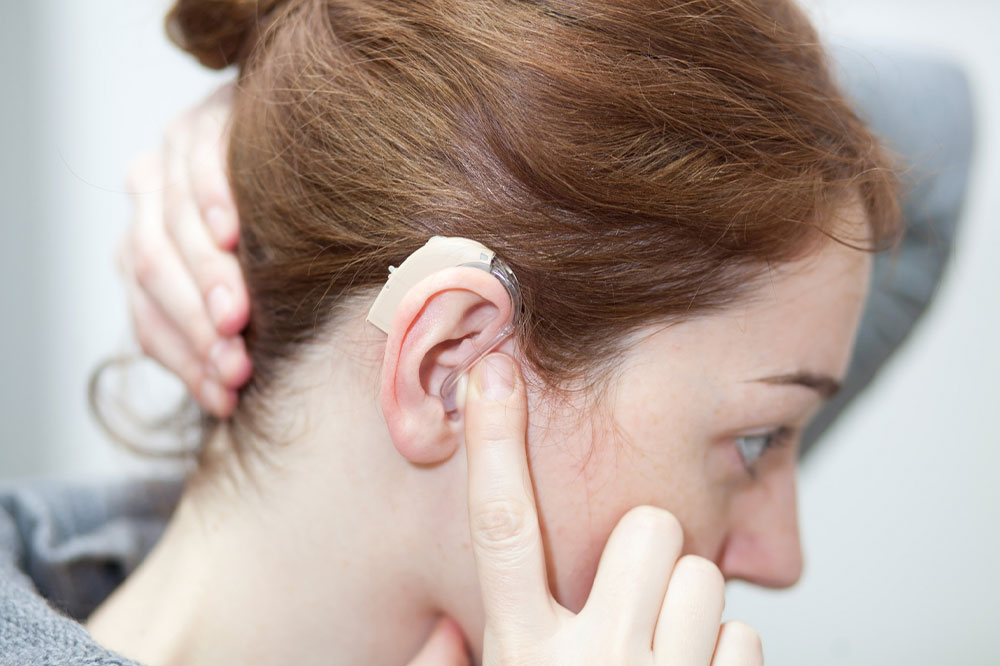
Hearing aids – How they work and available types
Hearing loss is common in old age. As per estimates, one in three adults over 65 suffers from the problem. It usually happens due to the gradual changes in the body linked to aging. However, it can be avoided by regular checkups, timely diagnosis, and treatment. One of the best ways to counter hearing loss is to wear a hearing aid. The device may improve the ability to hear both high-pitched and low-pitched sounds.
What causes age-related hearing loss?
It can be caused due to various bodily changes that happen over time, such as impairment of the nerves, loss of hair cells, poor blood circulation, and changes in the ear’s structure. The other factors causing age-related hearing loss are diabetes, heart disease, continuous exposure to loud noise, and family history. Whatever the cause, hearing aids help people hear better and improve their quality of life.
How do hearing aids work?
To understand how hearing aids benefit patients, we must learn how they work. A hearing aid is a tiny electronic device worn either inside or behind the ear that can easily be adjusted to suit the person’s needs. It can help a person hear clearly when the surrounding is quiet or even when there are loud noises.
A hearing aid comprises three parts: an amplifier, microphone, and receiver. The microphone picks up the nearby sounds when the hearing aid is switched on. Then, as the name suggests, the amplifier amplifies the surrounding sounds so that the person can hear them better. Finally, the receiver sends the amplified sounds into the person’s ear, which is, in turn, processed by the brain to improve hearing capabilities.
Hearing loss significantly impacts a person’s life and should not be ignored. It can affect the person’s emotional well-being, relationships with people, work life, and more. In cases like these, hearing aids can make all the difference. They can help patients hear high and low-pitched sounds better than before, especially if the suitable devices are picked and adjusted to their comfort. So, it is essential to be cautious while purchasing them.
What are the different types of hearing aids?
There are many options on the market, and these are easily available. The suitable type varies depending on various factors, such as the user’s preferences, physical abilities, and degree of hearing loss. Each device has its benefits and differs in shape and size as well. The common types of hearing aids to consider are as follows:
Behind the ear (BTE)
It is often used by people with mild to major hearing loss. The device holds all the essential components in a plastic case, often worn behind the ear. This case is connected to a disposable ear tip/earmold that fits in the ear to deliver sound through a tube. The benefits of BTE aids include increased controllability, availability for patients with severe hearing loss, custom earmolds offering more comfort, and choice of color. However, these might be more visible and cause discomfort to people who wear glasses.
Receiver-in-canal (RIC)
It is among the most popular types for people with mild to severe hearing loss. A RIC hearing aid delivers the surrounding sounds through a speaker resting in the ear canal. The sound travels through a wire from the amplifier to the speaker in this device. It then flows through the ear canal to the eardrum. The benefits of the RIC device include less visibility, the availability of a custom mold to provide increased volume, and a rechargeable battery.
In-the-ear (ITE)
This is another type used by patients with a degree of hearing loss ranging from mild to severe. An ITE device fits entirely inside the outer part of the patient’s ear. It has a small shell that houses the three hearing aid parts—the microphone, receiver, and amplifier. ITE aids may be larger than RICs but are easier to use. Some of their benefits include the availability of manual controls (like push buttons), the inclusion of telecoils for easy use of landlines, rechargeable batteries, and a comfortable fit inside the ear.
If a person experiences problems with hearing, the symptoms must not be ignored. Hearing aids can easily be procured after consultation with an ear, nose, and throat (ENT) doctor. Patients are also advised to visit an audiologist to understand the type of hearing loss and its degree. Based on the tests and the patient’s comfort level, specialists will suggest the hearing aid that would suit them best. Based on the situation, experts might also suggest other remedies to treat the cause of the problem.




